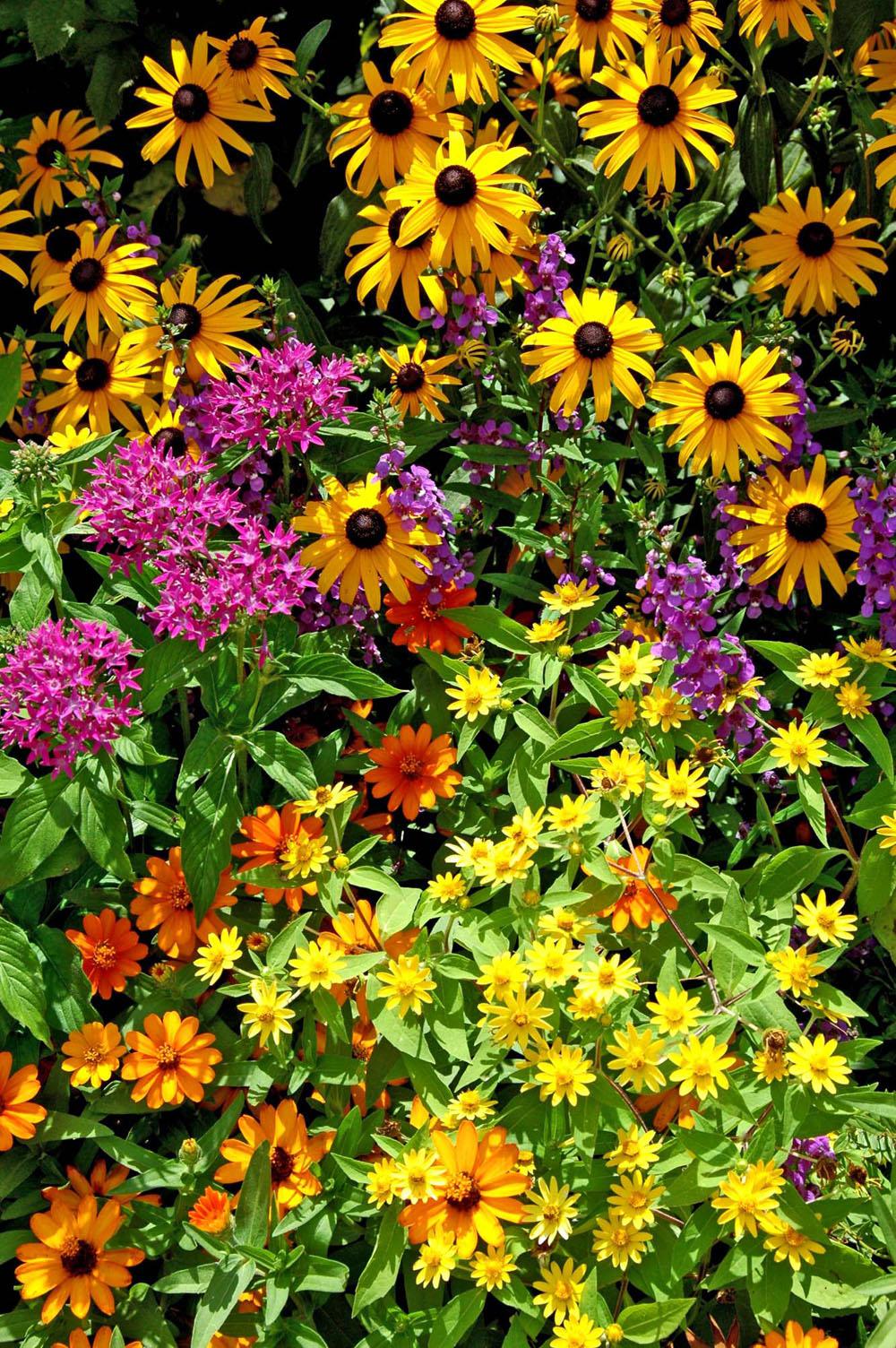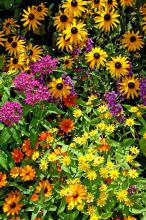Information Possibly Outdated
The information presented on this page was originally released on September 13, 2007. It may not be outdated, but please search our site for more current information. If you plan to quote or reference this information in a publication, please check with the Extension specialist or author before proceeding.
Yellow flowers bring happiness to gardens
By Norman Winter
MSU Horticulturist
Central Mississippi Research & Extension Center
If there were a color that represented happiness in the garden, it would have to be yellow. One of the three primary colors, it has the power to evoke hope and excitement.
When the forsythia breaks forth in the early spring, it not only catches your eye but it also invigorates your step. You know winter is over and a new season has been born. As we head into early fall, the dark yellow goldenrods make our roadways photogenic.
On the other hand, there is a reason the school bus is yellow and so many highway signs have a yellow background. Yellow makes you notice them and pay attention.
Yellow is from the hot side of the wheel and offers warmth like the brilliant sun. A pocket of yellow flowers at your entrance will warmly welcome visitors. This time of the year, Yellow Jacket chrysanthemums are beacon flowers. Like the caution sign on the road, using yellow near what you consider a weakness in the landscape will draw everyone's eye there.
On a bigger scale, yellow flowers in the garden have the ability to make a large landscape seem cozier.
Yellow can really play with your mind, depending on the amount of color saturation. For instance, the more saturated, deeper yellows provide a warm feel. Bright yellow tulips or daffodils partnered with pansies will warm the early spring garden. Conversely, yellow pastels like the yarrow, Jerusalem sage or Moonbeam coreopsis, though cheerful, buffer the intense summer heat.
The shade garden that seems to go unnoticed can be vibrantly defined with yellow flowers like the new Fusion Glow exotic impatiens. Another option is to use plants with golden yellow foliage, such as hostas, for a splash of yellow in the shade.
Deeper, darker yellows are found slightly to the left (or warmer) side of yellow. This seems to be where the real troopers for summer-long color are found in plants like New Gold lantana, Million Gold melampodium and Indian Summer rudbeckia.
Yellow's complementary color is violet or purple. When you partner the color of royalty with the radiant and gleaming yellow, there is a pageantry that manifests itself in the garden. Try Angelmist angelonias or summer snapdragons with some of the yellow melampodiums or Violet Tapien verbenas with New Gold lantana.
Don't forget about blue either. Though not yellow's opposite, the colors combine wonderfully and enhance each other just like a couple who has been married for years. Consider combinations such as Goldsturm rudbkeica and Sonny Border blue veronica or Prairie Sun rudbeckia and salvia farinacea.
A new pansy making its debut this fall is the Matrix Morpheus. Its boldly saturated yellow and blue colors make it a real looker.
Yellow works exceedingly well with its color-wheel neighbors orange and red. Yellow Moonstruck marigolds and Magalena Carpet Scarlet verbena, Fresh Look Red celosia, and Scarlet and Yellow Swizzle zinnias are all incredible long-season performers.
Make plans this fall to bring cheer and a touch of warmth to cool-season landscapes by using yellow. Yellow Jacket mums, Matrix Morpheus pansies, Penny Citrus violas, Sonnet snapdragons and Citrona erysimum are all coming to a garden center near you.




